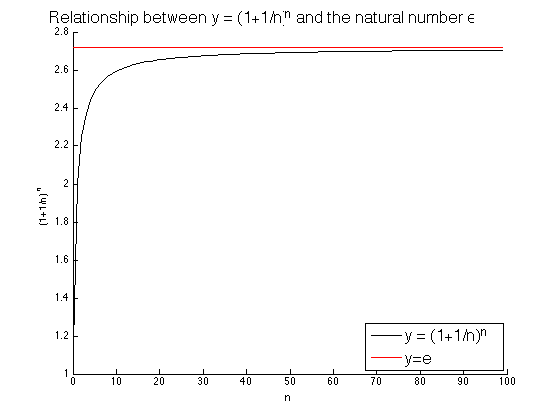Exponential and Logarithmic Functions
Contents
What is this number e, anyway?
Let's examine the curves y = (1+1/n)^n and y =e.
n = .01:100;
y = @(n) (1 + 1./n).^n;
e = exp(1);
yy = e*ones(size(n));
Let's plot both curves
figure; hold on;
title(['\fontsize{16}Relationship between y = (1+1/n)^n and the natural number e']);
b = plot(n,y(n),'-k',n,yy,'-r');
legend('\fontsize{16}y = (1+1/n)^n','\fontsize{16}y=e','Location','SouthEast')
xlabel('n');
ylabel('(1+1/n)^n');

From the plot, you can see that as n grows, 

